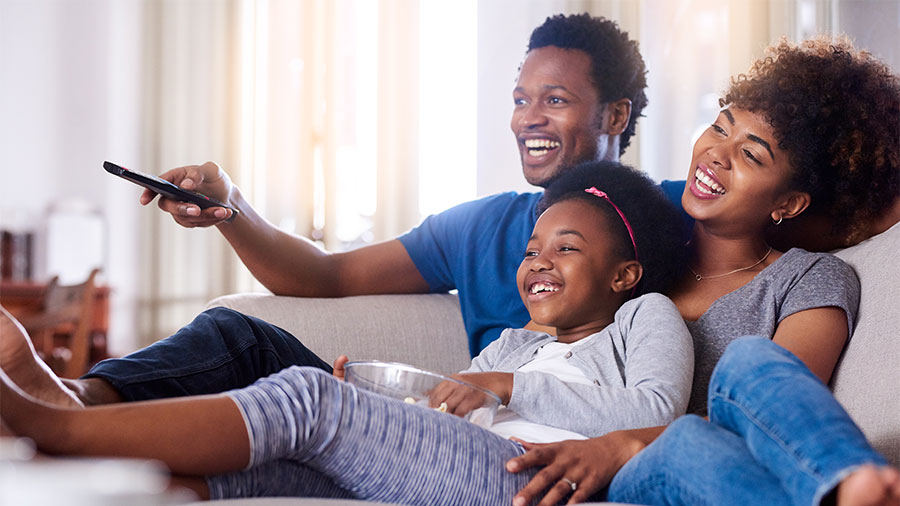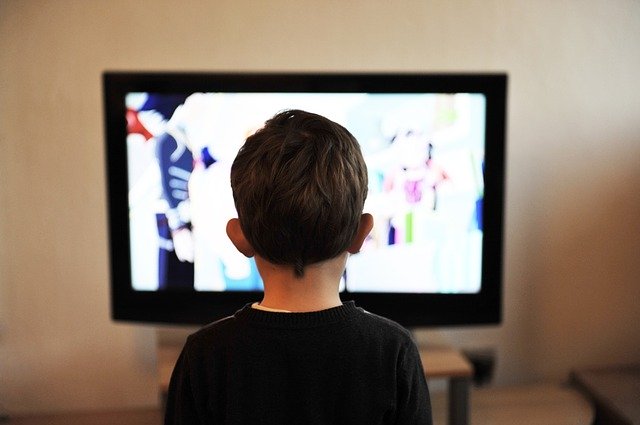Watch With Me
By: Crystal Price
Over the course of the past decade, technology has changed the way we live. We now have the luxury of personal devices that allow us to make phone calls, play games, and even watch TV, and adults are not the only ones with this freedom.
Justin Keene, an assistant professor in Texas Tech's College of Media & Communication and father of five, decided to research how children cognitively react to watching TV with or without parental presence after seeing the World Health Organization's (WHO) recommendations for screen time.
WHO states that no amount of screen time is appropriate for children in their first year of life, and those aged two to four should spend no more than an hour a day in front of a screen as it is unhealthy for cognitive and social development.
"Parents have this growing paranoia of what screen time is doing to kids long term even though a few years ago many parents used the TV like screens are used now," Keene says.
In 2014, Keene and his fellow researchers, including his colleague Eric Rasmussen, Ph.D., began discussing if parental presence changed how kids watched TV. "We wanted to find out what affect physically sitting in the room with your kid, both vegging out, and watching TV had on children compared to when they watch by themselves," Keene said.
The testing was conducted in the Center for Communication Research, which is housed in the College of Media & Communication. The Center allows for researchers to watch through mirrored glass and physically monitor the study. It also allows the participants to be comfortable with all the amenities of home, including chairs and a sofa.
Researchers chose two 11-minute clips of family-friendly content. Man vs. Wild with Bear Grylls was chosen for more stimuli and a whale documentary for less stimuli. The clips were then randomly chosen as well as whether a parent was present while the child was watching the clip.
To collect physical data, Keene and his team decided to use heart rate to monitor the children's responses while they watched the TV clip. "We chose heart rate because it is a good indicator of cognitive effort," Keene said.
Once the clip was finished, both the parent and child were asked to answer questions. Questions for the kids were mostly related to what they did or did not learn from the clip whereas adults were asked more about family dynamics and media interaction.
The research found that the co-viewing, or the presence of a parent, does impact a child's processing of the information and messaging displayed on the television, and that the type of information conveyed in television programming is also a factor. Entertaining media is much more effective than boring.

Parents being in the room, whether actually watching the program or not, and making effort to keep tabs on what their child was watching also had an impact. Keene says, "When a parent is in the room, children pay more attention regardless of the type of information. Children see a parent in the room as tacit approval."
Keene also states that just because some TV is entertainment media does not mean it is devoid of educational content. Sometimes the educational content is masked by the entertainment and relies more on inference, such as, "Night is coming, so Bear Grylls needs to find shelter."
Kids also benefit from learning to use the technology associated with watching TV. Using a remote or an app teaches the basics for using more advanced technology and computers. It is unrealistic to think that children will learn this at a later age or not at all.

However, just because a kid has learned to operate technology, parents still need to be aware of what their kids are watching and set boundaries around it. Keene says, "If you cannot monitor the time spent on a device, there are apps available that will shut the device off after so many minutes of watching. Be explicit with expectations and limits surrounding technology and the content viewed from said device."
Keene says it is all about balance. "You wouldn't let your child play outside for 15 hours a day so don't let your child watch 15 hours of shows. It just isn't healthy." Also, make sure content is age appropriate. "As adults, we tend to gloss over or ignore questionable content, but small ears and small eyes have a very long-term memory and a very big mouth," Keene says.
This research breaks the surface of how parents can avoid using TV as a babysitter, and provide structure surrounding media because no screen time is an untenable position. Ultimately, it's up to parents to set limits so children can have a healthy relationship with media.
Discoveries
-
Address
Texas Tech University, 2500 Broadway, Box 41075 Lubbock, TX 79409 -
Phone
806.742.3905 -
Email
vpr.communications@ttu.edu
